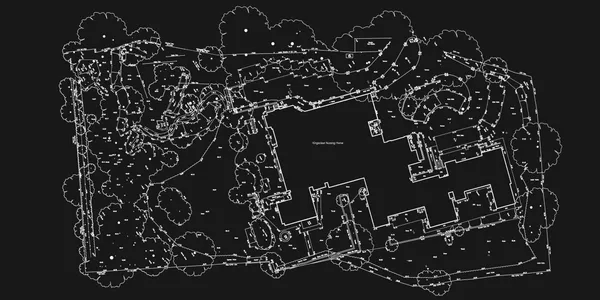Turning a house into your dream home doesn’t always require starting from scratch. In fact, modifying Existing house plans can be one of the most effective and affordable ways to create a home that suits your lifestyle, needs, and aesthetic preferences. Whether you’re buying a pre-owned home, remodeling your current one, or working with a builder’s stock design, customizing an existing plan offers both flexibility and practicality.
This article provides a comprehensive guide on how to successfully modify existing house plans, from evaluating what you have to collaborating with professionals and ensuring your changes meet structural and legal requirements. With thoughtful planning and the right team, you can adapt your current space into a personalized dream home without the cost or complexity of building from the ground up.
Understanding Existing House Plans
Before making any changes, it’s important to fully understand your existing house plans. These are architectural drawings that detail your home’s current layout, dimensions, structure, and systems. Common components include:
-
Floor plans showing room sizes and placements
-
Exterior elevations showing how the building appears from the outside
-
Sections and cross-sections revealing internal construction elements
-
Electrical, plumbing, and HVAC layouts
-
Roof and foundation details
-
Site plans indicating the home’s position on the lot
Reviewing these documents gives you a clear sense of how your home is built, where critical systems are located, and which areas offer the most flexibility for customization.
Benefits of Modifying Existing House Plans
Modifying existing plans allows you to work with your current space or a base design, which saves both time and money. It also provides these advantages:
-
You retain the integrity of the home while making it more functional
-
There’s less guesswork for contractors and engineers
-
Permits and approvals are easier to obtain when plans are grounded in an existing structure
-
You minimize demolition and unnecessary structural work
-
It’s easier to visualize the end result when you start from a real-world layout
Whether your goal is to expand the kitchen, add a home office, or improve natural light, adjustments to existing plans can help you achieve it efficiently.
Step-by-Step Process to Modify Existing House Plans
Evaluate Your Current Layout
Start by carefully reviewing the current floor plan. Identify what works well and what doesn’t. Ask yourself:
-
Are there underused or awkward spaces?
-
Do the room sizes suit your lifestyle?
-
Is there sufficient natural light and ventilation?
-
Are traffic patterns smooth and intuitive?
-
Are storage areas adequate?
-
Does the home support your long-term needs (e.g., aging in place, growing family, remote work)?
Make a list of the areas that need to change and why. This will become your design brief moving forward.
Prioritize Your Needs and Goals
Define your objectives for the renovation. Common motivations for modifying house plans include:
-
Creating open-concept living spaces
-
Adding more bedrooms or bathrooms
-
Expanding the kitchen or dining area
-
Converting a garage or basement into livable space
-
Adding outdoor features like decks or sunrooms
-
Improving accessibility or accommodating mobility issues
Be realistic about your budget and timeline. It’s better to prioritize essential changes and phase out aesthetic upgrades if needed.
Consult a Professional
Even if you have a clear vision, it’s essential to involve an architect or designer who can assess the feasibility of your ideas. They’ll help you determine:
-
Whether your changes are structurally possible
-
How to modify the design without compromising safety or code compliance
-
Which walls are load-bearing and what can be moved
-
How your modifications affect the home’s exterior appearance
-
What permits or approvals you may need
A qualified professional can also create updated construction drawings based on your modified plans, which are necessary for contractors and local authorities.
Consider Structural Constraints
Every house has its limits. You’ll need to work within your home’s structural framework, including:
-
Load-bearing walls and support beams
-
Ceiling heights and roof pitch
-
Foundation limits
-
Plumbing and electrical systems
-
Stair placement and ceiling clearance
While many of these elements can be altered, doing so can dramatically increase project costs and complexity. That’s why identifying and understanding these constraints early is critical to smart, cost-effective design.
Optimize Existing Infrastructure
Modifying house plans doesn’t mean changing everything. Smart renovations often preserve and repurpose what’s already there. For example:
-
Use existing plumbing lines when adding a new bathroom to reduce cost
-
Open up walls between adjacent rooms instead of completely reconfiguring the layout
-
Convert attics or basements into functional spaces without major structural work
-
Repurpose underused areas like formal dining rooms or hallways into practical zones like offices, pantries, or storage
Preserving some structural components can free up budget for design features that matter more to you.
Customize the Design Aesthetically
Once structural and functional needs are addressed, focus on aesthetics. Adjust window and door placements for better light and flow. Choose finishes, materials, and fixtures that align with your dream vision.
If you’re modifying a builder’s plan or buying from a development, most companies offer upgrade options like:
-
Larger kitchen islands
-
Higher ceilings
-
Optional fireplaces or built-ins
-
Alternative façade designs
Work with your designer to make sure these visual changes don’t compromise practical aspects of the layout.
Ensure Code Compliance and Get Permits
All renovations and structural modifications must comply with local building codes and zoning regulations. This includes:
-
Minimum ceiling heights
-
Room sizes and window requirements for ventilation and egress
-
Fire safety standards
-
Setbacks and height limits
-
Accessibility codes if applicable
Submit your revised plans for approval to your local building authority. This step may also require structural drawings, energy efficiency reports, and engineer sign-offs, depending on the extent of the modifications.
Hire the Right Contractors
Once your modified plans are approved, you’ll need a contractor or builder who understands how to work from altered designs. Share the finalized plans with them and walk through the proposed changes in detail. Make sure they understand:
-
Structural changes and support needs
-
New layouts for plumbing and electrical systems
-
Material selections and finishes
-
Timeline and budget expectations
Hiring a contractor who’s experienced in remodeling and additions—rather than only new builds—can make the process smoother.
Smart Modifications That Add Value
If you’re modifying plans with resale in mind, consider updates that add the most value:
Open Living Spaces
Removing walls between kitchens and living areas creates a more social, modern environment.
Additional Bedrooms or Bathrooms
Extra functional space, especially bathrooms, can significantly boost property value.
Energy-Efficient Upgrades
Insulation, windows, and smart home technology can appeal to eco-conscious buyers and lower utility bills.
Home Offices and Flex Rooms
In a post-pandemic world, versatile rooms that serve multiple purposes are highly desirable.
Outdoor Living Enhancements
Decks, patios, and balconies increase living space and enjoyment of the property.
Tips for a Successful Modification Process
-
Always keep copies of your original and modified plans for future use
-
Maintain open communication with your architect and contractor
-
Be flexible; not all ideas may be feasible exactly as you imagine
-
Set a realistic contingency budget for unexpected changes
-
Focus on both function and beauty—your dream home should be livable as well as lovely
Updating the Plans Post-Renovation
After the renovation is complete, ask your architect or surveyor to update the plans to reflect the final build. This updated version is valuable for:
-
Insurance purposes
-
Future remodeling or maintenance
-
Resale documentation
-
Accurate property assessment
Store digital and printed copies safely for easy access down the line.
Final Thoughts
Modifying existing house plans is an empowering way to bring your dream home to life without the complexities of starting from zero. Whether you’re expanding, reconfiguring, or enhancing your space, the key to success lies in understanding your current structure, working with experienced professionals, and aligning your vision with what’s realistically achievable.
By starting with the foundation of your current layout and thoughtfully building upon it, you can transform an ordinary home into a tailored haven that meets your needs, reflects your personality, and grows with you over time. With a bit of planning and the right team, your dream home is closer than you think.




